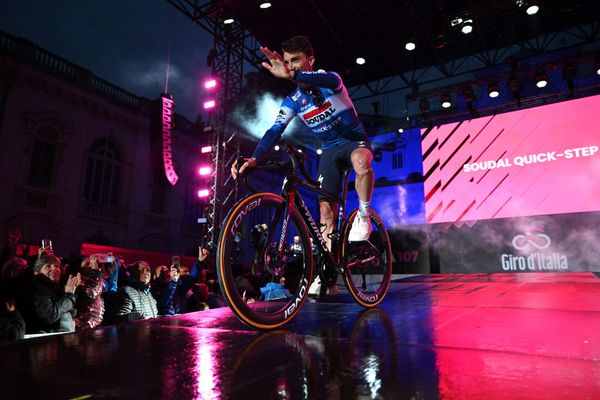The Oreo test: How are the Arenberg cobbles shaping up for Paris-Roubaix?
Armed with a pack of chocolate biscuits, we assess the size, severity and condition of Paris-Roubaix's most fearsome cobblestone sector ahead of the weekend
George Poole
Junior Writer
© GCN
Five Oreos deep soon became the norm for much of the Arenberg's cobbled surface
Three days out from the 2024 men's Paris-Roubaix, the race's most iconic stretch of pavé is an eery, almost surreal place.
The Trouée d'Arenberg (literally Trench of Arenberg) carries an air of anticipation as the hours tick by for the big day, when hundreds of the world's best cyclists will thunder over the 2.3km-long sector of cobblestones and seek to safely navigate the most dangerous part of the route.
Nowhere to be seen is the giant gazebo that will serve thirsty guests on race day, nor the throngs of supporters that will line each side of this narrow track, nor the ticker tape that will hold those very fans away from the chaotic path of the riders.
Instead, there are dog walkers, amateur cyclists and of course, a committed tribe of goats who have been tasked with clearing some of the vegetation that has seeped through the cobbles over the winter months.
Read more: The real heroes of Paris-Roubaix? Goats let loose on the cobbles of Arenberg
This past winter has brought particularly bad weather that has plagued the region with persistent floods, a recipe for disaster when it comes to Paris-Roubaix. On a dry day, the notoriously rough, serrated and irregular cobblestones of northern France are difficult enough to tackle, but in the wet, this task is made all the more difficult.
Not only does water make the cobbles slippy, but it raises mud and grass to the surface, whilst also freezing within the sandstone during the winter months, causing the cobbles to expand and crack. It is little wonder that local newspapers have been reporting dangerous conditions for the race otherwise known as the 'Hell of the North' in recent weeks.
.jpg?w=1348&auto=format)
© GCN
Discovered by Jean Stablinski as he worked in the nearby mineshaft, Arenberg's fearsome cobbles were introduced to Paris-Roubaix in 1968
With this in mind, when the GCN team landed in France on Thursday morning, we had one thing in our minds: checking out the condition of the Trouée d'Arenberg for ourselves. How were the cobbles shaping up ahead of Sunday's race?
With our walking boots securely fastened and an unopened packet of Oreo biscuits to hand, we began our reconnaissance of cycling's most acclaimed natural arena. Let us explain.
What is the Oreo test?
For those unfamiliar with the delectable taste of Oreo biscuits - other biscuits are available from your local supermarket - these family-favourites pack a vanilla cream filling inside a chocolate cookie sandwich. Measuring 1.75 inches in diameter, the black and white treats can be enjoyed equally with or without a glass of milk to dunk 'n' bite.
They are also one of the most popular biscuits in the world and enjoyed by customers in over 100 nations across the globe. For that reason, we'd like to think that you'll have a rough idea of the size of an Oreo when held in the hand - not large, but not too small either.
Now, we'll admit that they were on special offer at St Pancras International on our Thursday morning travels, but they also seemed like the perfect item to give a sense of scale to the cobbles of Arenberg. Our thanks go to Lidl-Trek for the idea.
Be it the gaps between cobblestones, the sheer size of the sandstone blocks themselves, or even the dampness of the path in general - which soon turned our biscuits to mush - we got a thorough understanding of the conditions that the riders are set to face on Sunday.
Here's what we discovered.
Cobbles so big that we ran out of Oreos
At the beginning of our reconnaissance, the idea was to find a cobble that was so large that it was equivalent to five Oreos stacked on top of each other. There are three five-star sectors in Paris-Roubaix - Arenberg being the first on the route - so five Oreos seemed like a natural fit.
It soon became clear that five Oreo biscuits would not be enough.
In fact, five-Oreo sectors, as we liked to call them, were two a penny across the 2.3km stretch of pavé. They were so frequent that, after stacking our pile of biscuits up within each crevasse, the bottom Oreo would soon become a sodden mess.
After enough Oreos were discarded of - or eaten, admittedly - it came to a point when rations were running low. Imagine our surprise, then, when we came across what we would like to unofficially deem the most gnarly cobblestone in the entire 259.4km of Paris-Roubaix.
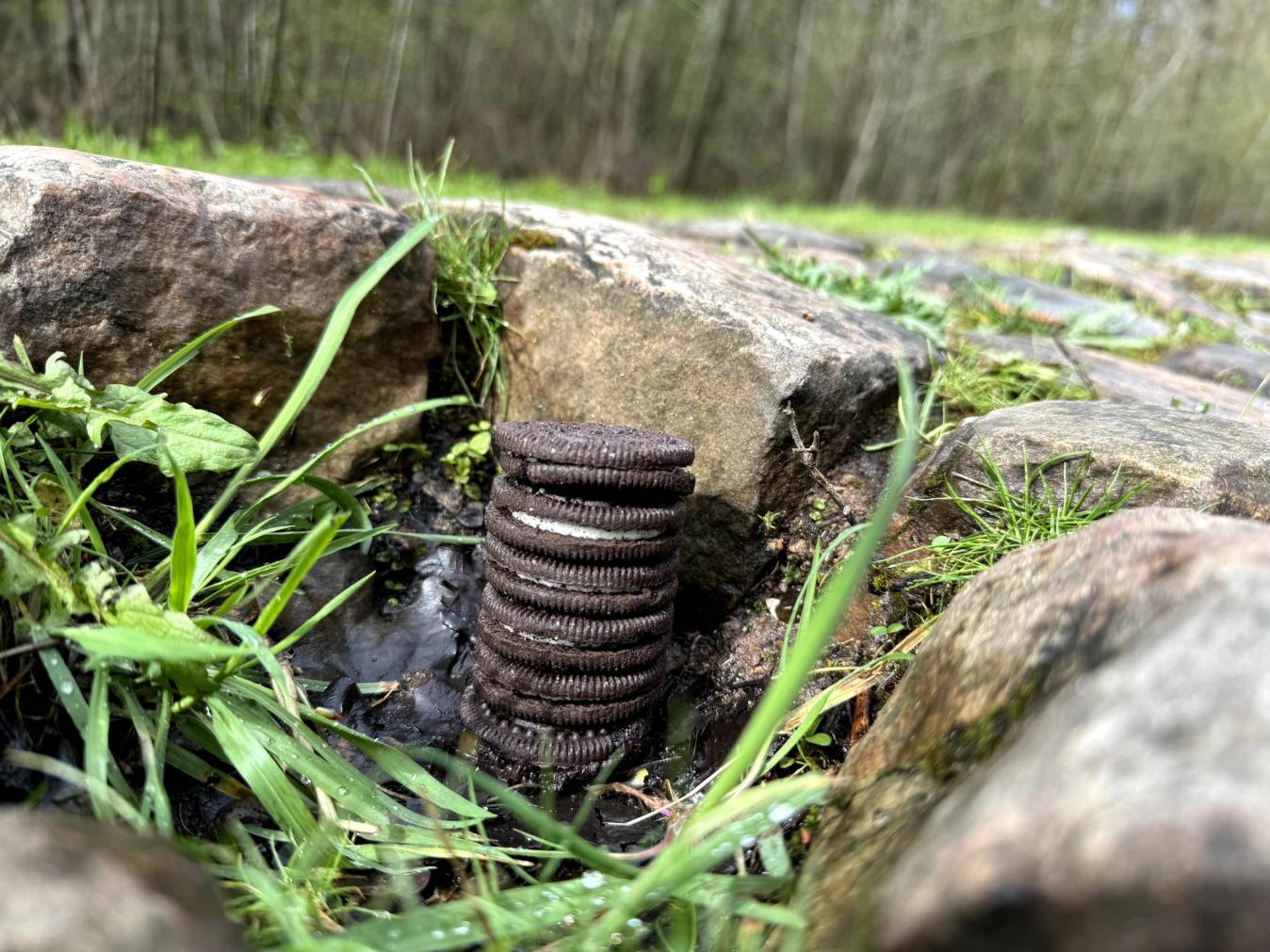
© Getty Images
Believe it or not, that is six Oreo biscuits stacked on top of one another. Could we have got to eight?
Situated approximately 800m into the sector, this particular cobblestone is made all the more barbaric by the gap in pavé that precedes it, which means that some unfortunate rider will likely hit this obstacle. We can only hope for their sake that they might be able to swerve clear at the last second, because hitting this piece of stone at speed could spell trouble.
With our supply of Oreo biscuits down to six by this point, we could not muster enough supplies to get an accurate reading on its true size. But one look at the picture above will tell you all you need to know; this could have been an eight-Oreo sector or more.
It's little wonder that more than 10,000 supporters gather in the Arenberg Forest each year to watch their heroes risk everything to conquer the roads of bygone times - it is simply epic.
Read more: Paris-Roubaix: Moments that have defined cycling's most-loved Monument
The cobbles aren't the only problem for the riders
The warnings of the local newspapers were unsurprisingly true. After months of moisture, vegetation has flourished throughout the course, sprouting upwards from every nook and cranny in search of sunlight. This is no new problem for the race, however, and has been looked after by Les Amis de Paris-Roubaix since 1999.
As a volunteer organisation that seeks to protect the pavé, a large part of Les Amis de Paris-Roubaix's time is taken up trying to avoid Arenberg being swallowed whole by the greenery. In the past this was done by industrial machines, but in light of the growing climate emergency, they have now turned to the aforementioned goats for help.
Read more: Paris-Roubaix gets by with a little help from its friends
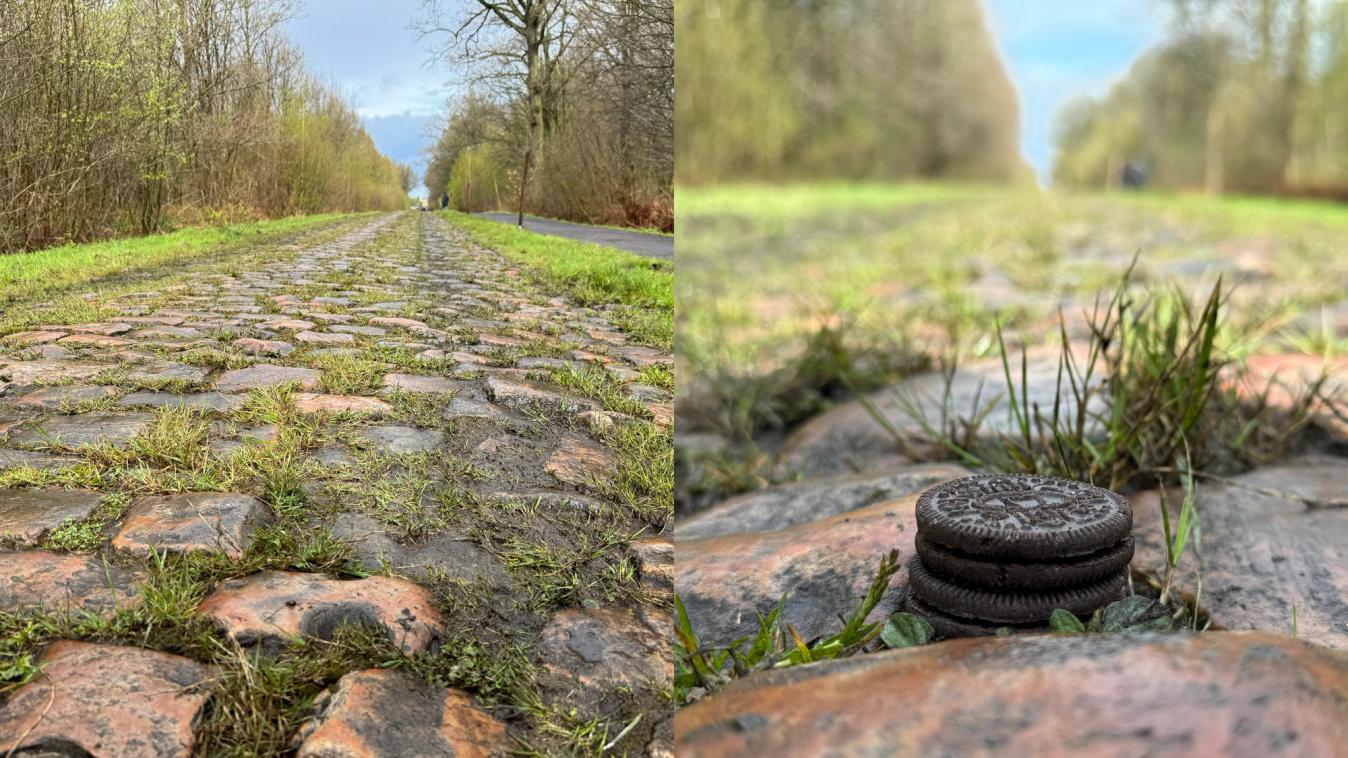
© Getty Images
A green landscape will welcome the riders to 'hell'
Around 40 goats were hard at work on Thursday morning, but they simply can't cover the entire 2.3km of cobblestones and so a roller will be used by the organisation closer to the race to flatten the tall shoots of grass.
It is never the group's aim to completely rid Arenberg of its vegetation, after all, that would make the gaps between each cobblestone more pronounced and therefore dangerous. But with plenty of exposed grass colouring the landscape of Arenberg this year, the potential for slips and falls will naturally be higher.
Watch out for the gaps between cobblestones
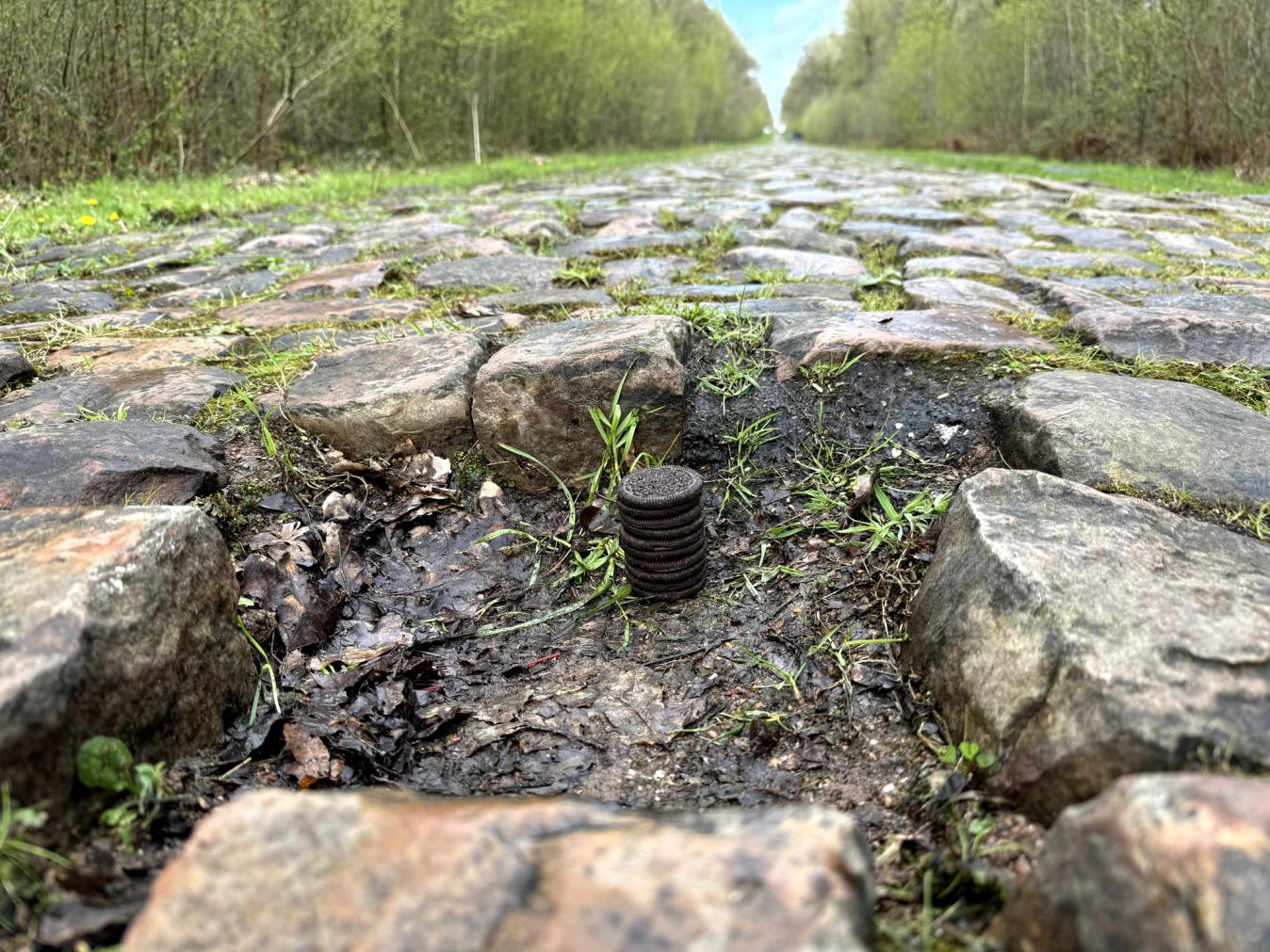
© GCN
Here, our Oreo biscuits are simply dwarfed by the chasm in which they sit
As for those gaps, the vegetation might hide the irregularity in which the cobbles are laid in some parts, but in others, missing cobbles have opened up blotches of exposed mud spread scattergun throughout the sector. If a rider finds themselves within one of these craters, there's only one way out, and that's a rough return to the cobbled top surface on the other side.
Between the time of writing and Sunday, it is possible that some of these gaps will be filled in by the organisers, but that won't be the case for all of them. As you can see in the image below, some areas had been given a stop-gap solution of shale.

© GCN
There's even room for a size 8/42 (UK/EU) trainer in some of the holes!
Should a rider suffer a crash on the Arenberg, it can be incredibly dangerous; friend of GCN Mitch Docker came away with severe facial injuries from his horrifying pile-up in 2016.
Even a mechanical, though, can spell disaster for a rider over this sector. With the riders so spread out by the midway point of Arenberg, team cars can be over a minute behind their riders. If you lose a minute or more tending to a puncture at the end of this sector, it could well be game over some 93km from the finish.
Read more: A beginner's guide to Paris-Roubaix
Be it ruts or damp, danger awaits on Sunday
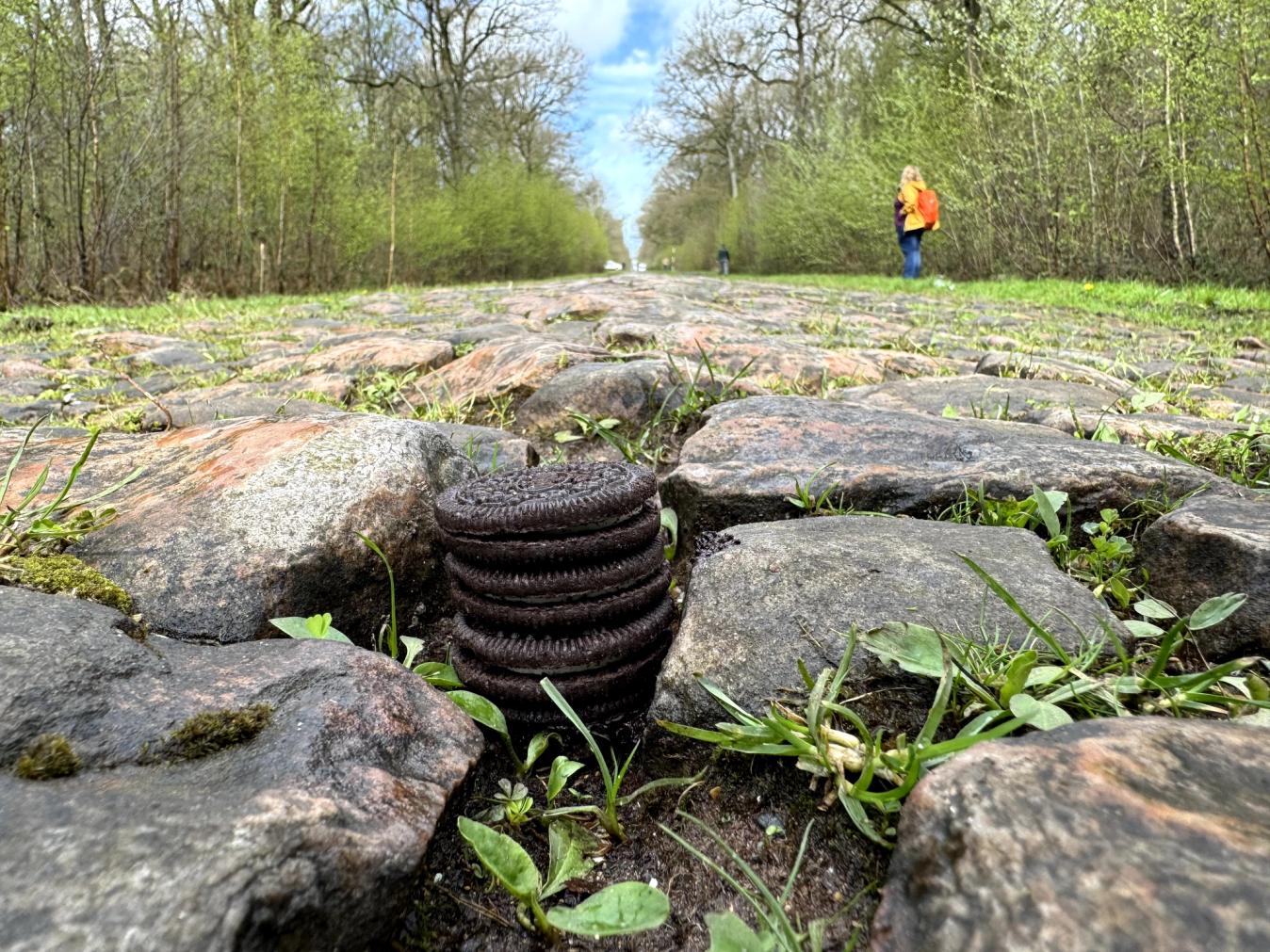
© GCN
You wouldn't want to get a tyre stuck in-between this hodgepodge of cobbles
To our eyes, two more dangers lurk: ruts and damp.
These cobbles are not like those seen in town centres up and down Europe, instead the slabs are placed in a mishmash of patterns that serve only to make the ride as uncomfortable as possible. Napoleonic road-laying was notoriously strewn.
Within this (lack of) arrangement lay ruts - oftentimes three Oreos deep - and these are to Paris-Roubaix what the 'valley of death' is to the Flemish Classics: an accident waiting to happen should any riders struggle to escape their grasp.
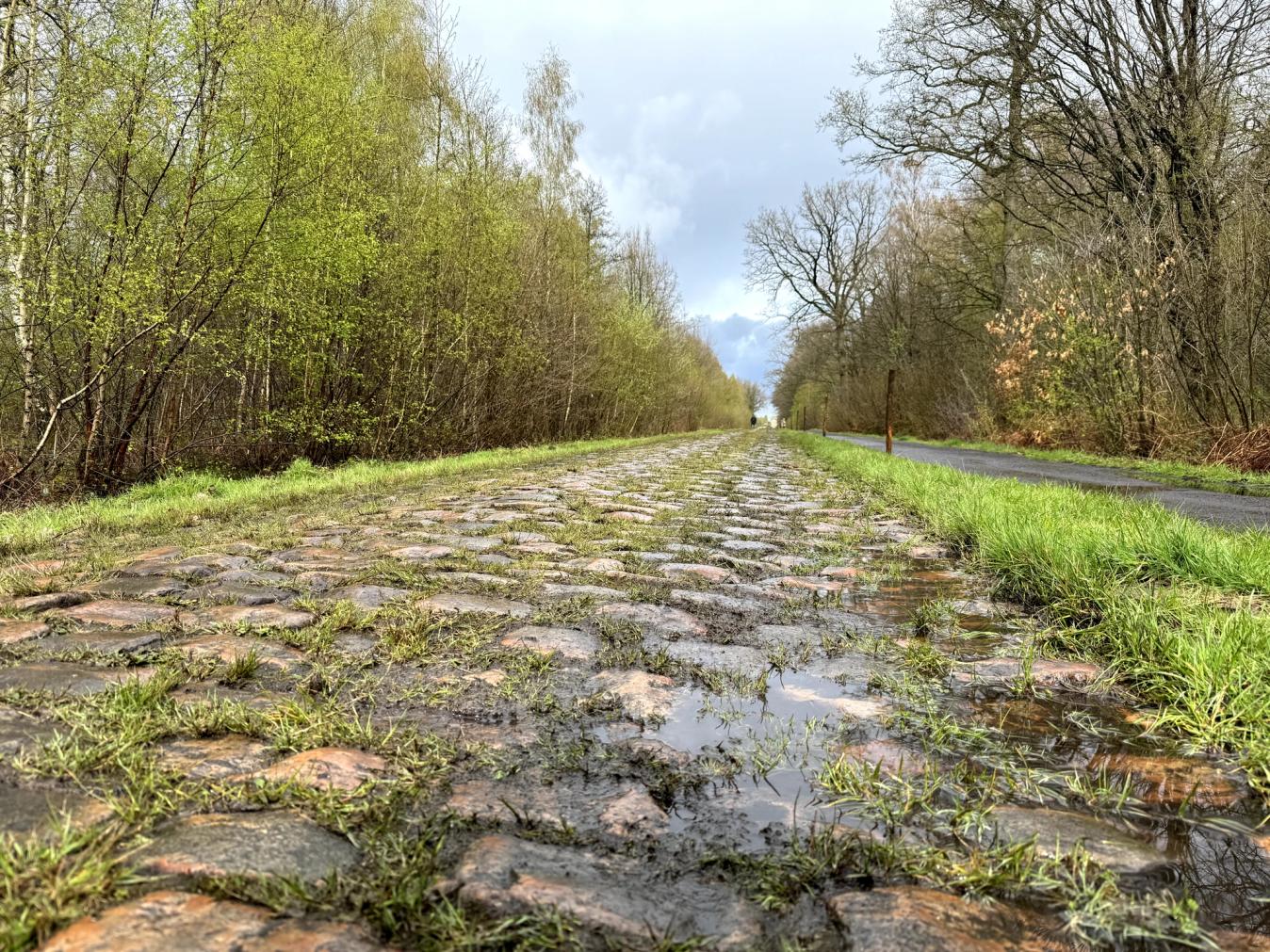
© GCN
This image should be enough to strike fear into many a rider ahead of the weekend
Looming large over Arenberg all the while, is the foreboding presence of grey skies that burst in spells on Thursday, but is forecast to bring a downpour on Sunday morning. In spite of Saturday promising a sunny day in the mid 20s, Arenberg will simply not dry out between now and Sunday.
Whilst some fans will revel in the promise of another wet edition, the riders will certainly not be thankful for an extra layer of difficulty thrown onto this five-star sector.
Did you think we'd forgotten the chicane?
So, to the chicane, introduced to this year's Paris-Roubaix route just a few days ahead of the race at the behest of the riders' union. On the ground in Wallers-Arenberg, there was certainly quite a buzz around this brand-new entry into the Forest of Arenberg itself.
Read more: Paris-Roubaix: Chicane added to slow entry to Arenberg cobbled sector
Media crews assembled, staff were on hand dealing with the barriers and plenty of teams practised their entry throughout the day.
On Thursday, Visma-Lease a Bike, Decathlon AG2R La Mondiale and Uno-X Mobility rode the sector shortly one after another, bikes shuddering all the while like a washing machine on full cycle, before the road was returned to the gentle soundtrack of birdsong.
Instead of thundering down the Avenue Michel Rondet at 60km/h before taking a straight approach onto the cobbles, the riders will now navigate a (very) small chicane mere metres away from the entrance.
The idea is to slow the riders down and avoid nasty pile-ups in the initial few hundred metres of Arenberg, which trend downhill. That is all well and good, but the bad news we've got to report is, the new chicane performed rather poorly in the Oreo test.
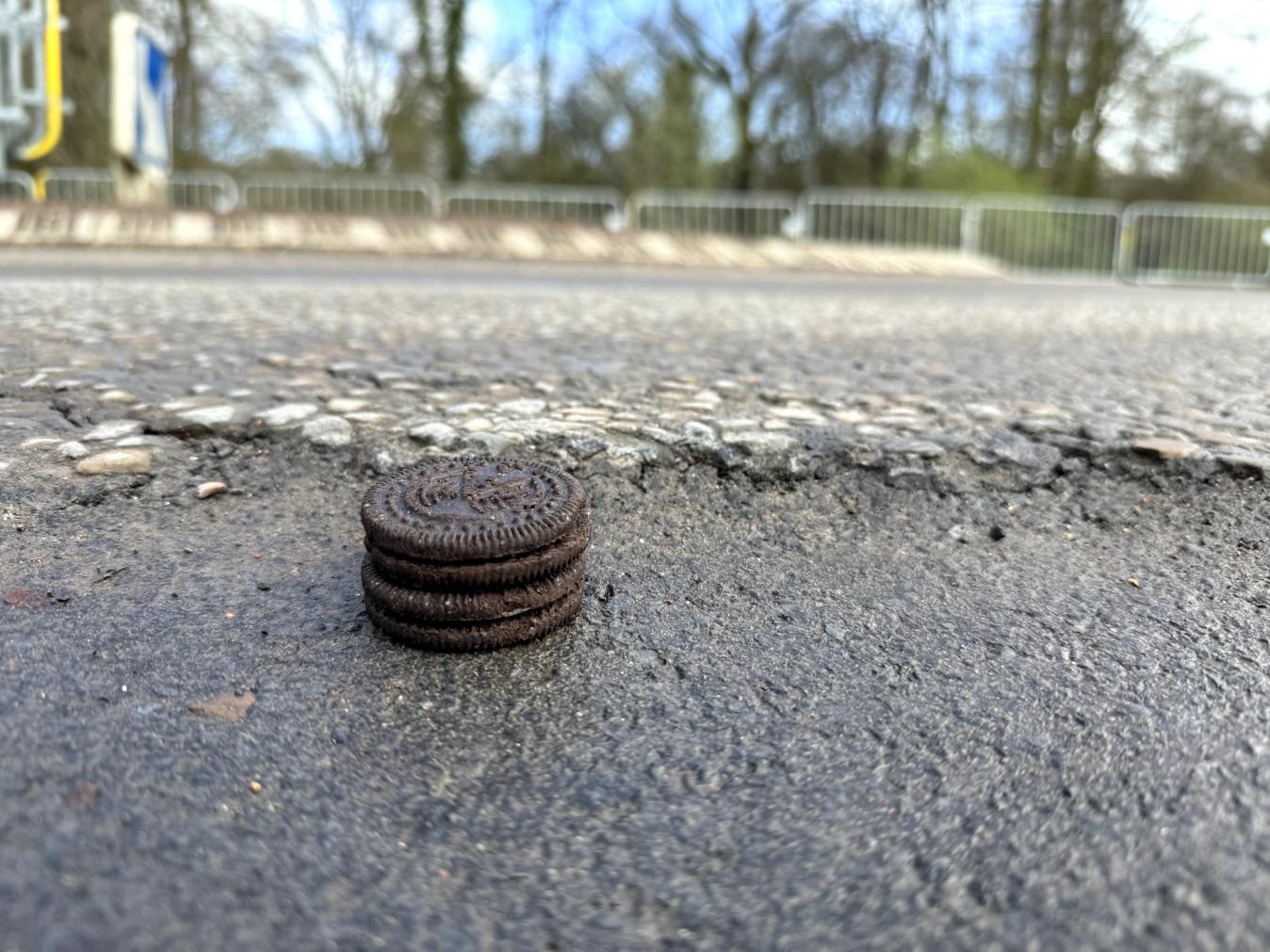
© GCN
Two Oreos was rather generous, in retrospect
- Read more: Adam Hansen defends Paris-Roubaix Arenberg chicane amid Mathieu van der Poel's public criticism
Heading back to the GCN team car without any remaining Oreos, our energy levels were beginning to wane but our enthusiasm for Sunday's race could not have been higher. The Trouée d'Arenberg is one of sport's great cauldrons and on Sunday it will be a cacophony of noise as some of the world's most passionate fans welcome the best one-day riders of this generation.
Beers will be flowing, frites will be selling like hot cakes, and flags of all nations will be waved manically as the TV bikes motor through. It will be a once in a lifetime experience for many.
But for now, the Arenberg waits, quiet but threatening and with an air of mischief. Be it the monstrous cobbles, the deep ruts or the unruly vegetation, this stretch of cobbles is never simple. That is why we love it.
For the latest news, interviews and analysis from the world of professional cycling, be sure to check out the Racing tab on the GCN website and visit our essential guide to The Spring Classics to stay up to date with all of the action from cycling's most exciting season.
.jpg%3Frect%3D0%2C173%2C4088%2C2721%26w%3D1280%26h%3D852%26auto%3Dformat&w=3840&q=90)












.jpg?w=600&auto=format)

